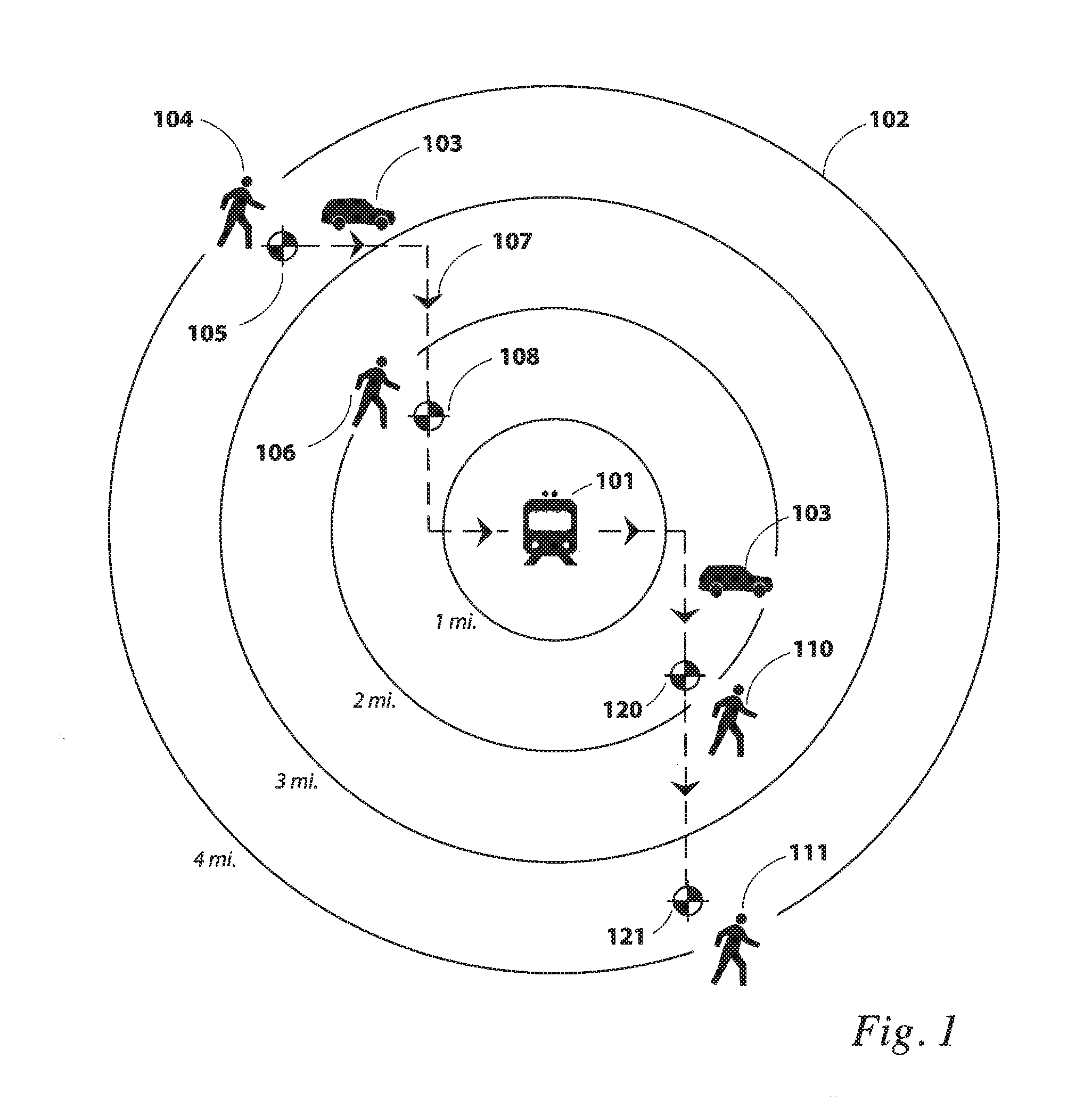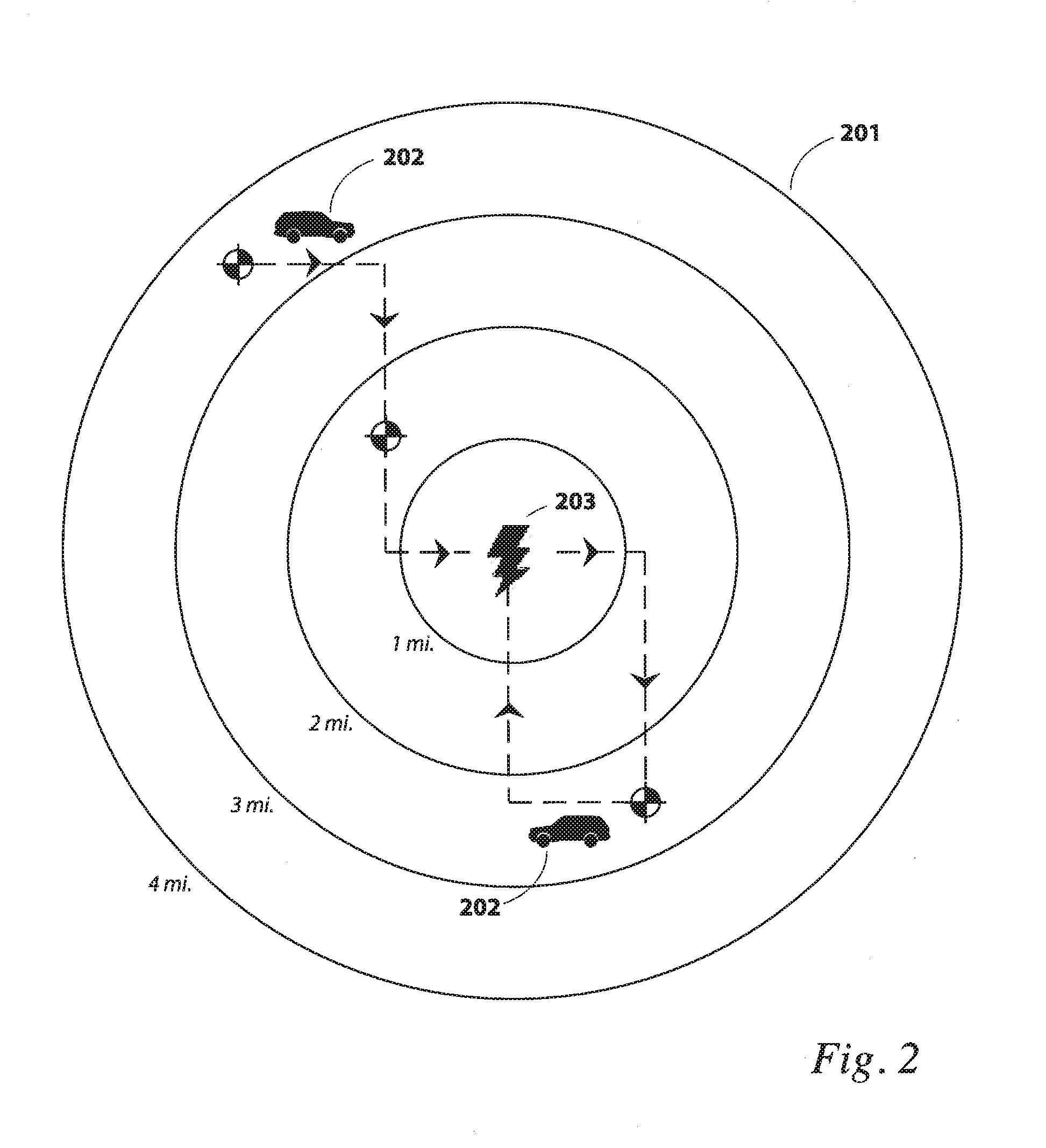Urban transportation system and method
a technology of urban transportation and transportation system, applied in the field of urban transportation system, can solve the problems of inaccessibility to public transit systems, inconvenient use, and difficulty in increasing the utilization of public transit systems, and achieve the effect of convenient and flexible us
- Summary
- Abstract
- Description
- Claims
- Application Information
AI Technical Summary
Benefits of technology
Problems solved by technology
Method used
Image
Examples
Embodiment Construction
[0026]While the present invention has been particularly shown and described with reference to a number of embodiments thereof, it will be understood by those of ordinary skill in the art that various changes in form and details may be made therein without departing from the spirit and scope of the present invention as defined by the following claims, and their equivalents.
[0027]Mass transit (e.g., a rail transit or subway) is well suited to a densely populated area because each station can provide service to a large number of passengers who are within walking proximity of the station. The walking proximity is generally determined by an accessibility radius (e.g., 0.5 miles or fifteen minutes walking distance) with the station of the transit system at the center. However, in a low-density environment such as the suburb that has predominantly single family homes, each station of the same mass transit will provide service to a much smaller number of passengers within the same accessibi...
PUM
 Login to View More
Login to View More Abstract
Description
Claims
Application Information
 Login to View More
Login to View More - R&D
- Intellectual Property
- Life Sciences
- Materials
- Tech Scout
- Unparalleled Data Quality
- Higher Quality Content
- 60% Fewer Hallucinations
Browse by: Latest US Patents, China's latest patents, Technical Efficacy Thesaurus, Application Domain, Technology Topic, Popular Technical Reports.
© 2025 PatSnap. All rights reserved.Legal|Privacy policy|Modern Slavery Act Transparency Statement|Sitemap|About US| Contact US: help@patsnap.com



